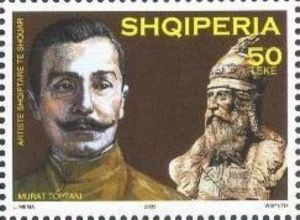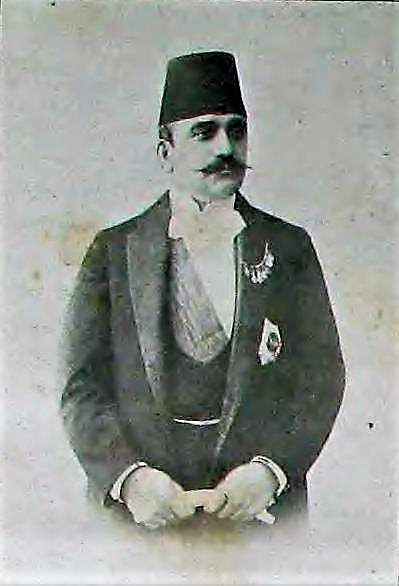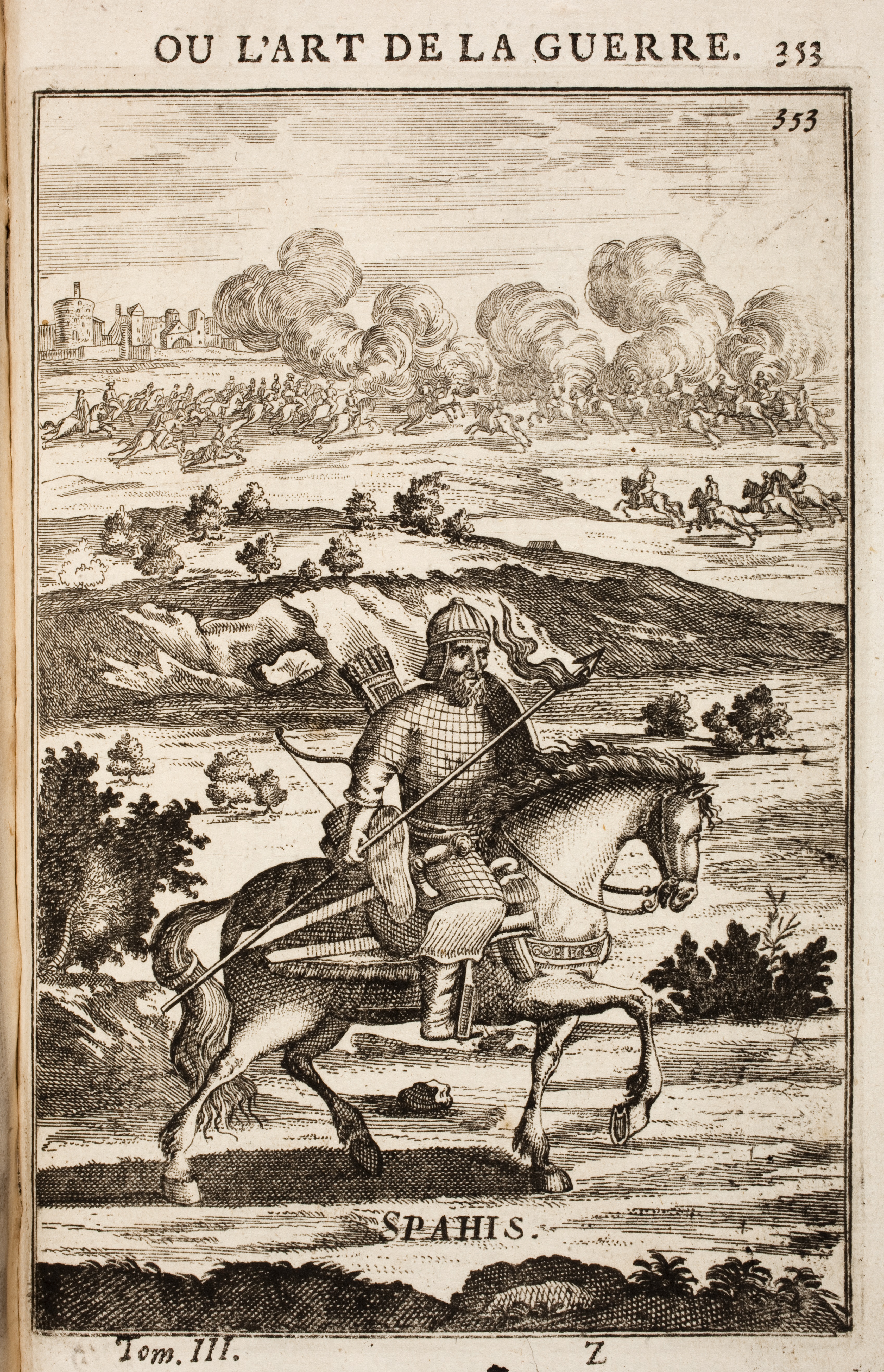|
Toptani Family
The Toptani family was the leading Albanian noble family in central Ottoman Albania at the beginning of the 20th century. The Toptani family belonged to a small number of noble families appointed by the Ottomans who used local chieftains to control Ottoman Albania more easily. Essad Pasha Toptani, the head of the family at the beginning of the 20th century, claimed that the family descended from the Thopia family. According to some sources, the name is derived from the word ''top,'' which means cannon, as the family owned a cannon at a time when artillery was rare. Estates The Toptani family initially lived in Krujë before moving to Tirana during the 17th century, when many sipahis moved from rural regions of the Ottoman Empire to cities. Their move from Krujë to Tirana probably contributed to the development of sharecropping in Albania. The Toptani family possessed around 50,000 hectares near Tirana and Durrës and remained one of the main landowners until the end of the S ... [...More Info...] [...Related Items...] OR: [Wikipedia] [Google] [Baidu] |
Albania
Albania ( ; sq, Shqipëri or ), or , also or . officially the Republic of Albania ( sq, Republika e Shqipërisë), is a country in Southeastern Europe. It is located on the Adriatic and Ionian Seas within the Mediterranean Sea and shares land borders with Montenegro to the northwest, Kosovo to the northeast, North Macedonia to the east and Greece to the south. Tirana is its capital and largest city, followed by Durrës, Vlorë, and Shkodër. Albania displays varied climatic, geological, hydrological, and morphological conditions, defined in an area of . It possesses significant diversity with the landscape ranging from the snow-capped mountains in the Albanian Alps as well as the Korab, Skanderbeg, Pindus and Ceraunian Mountains to the hot and sunny coasts of the Albanian Adriatic and Ionian Sea along the Mediterranean Sea. Albania has been inhabited by different civilisations over time, such as the Illyrians, Thracians, Greeks, Romans, Byzantines, Venetians, and Ot ... [...More Info...] [...Related Items...] OR: [Wikipedia] [Google] [Baidu] |
Tirana
Tirana ( , ; aln, Tirona) is the capital and largest city of Albania. It is located in the centre of the country, enclosed by mountains and hills with Dajti rising to the east and a slight valley to the northwest overlooking the Adriatic Sea in the distance. Due to its location at the Plain of Tirana and the close proximity to the Mediterranean Sea, the city is particularly influenced by a Mediterranean seasonal climate. It is among the wettest and sunniest cities in Europe, with 2,544 hours of sun per year. Tirana was founded as a city in 1614 by the Ottoman Albanian general Sylejman Pasha Bargjini and flourished by then around the Old Mosque and the ''türbe''. The area that today corresponds to the city's territory has been continuously inhabited since the Iron Age. It was inhabited by Illyrians, and was most likely the core of the Illyrian Kingdom of the Taulantii, which in Classical Antiquity was centred in the hinterland of Epidamnus. Following the Illyrian Wars it wa ... [...More Info...] [...Related Items...] OR: [Wikipedia] [Google] [Baidu] |
Toptani Family
The Toptani family was the leading Albanian noble family in central Ottoman Albania at the beginning of the 20th century. The Toptani family belonged to a small number of noble families appointed by the Ottomans who used local chieftains to control Ottoman Albania more easily. Essad Pasha Toptani, the head of the family at the beginning of the 20th century, claimed that the family descended from the Thopia family. According to some sources, the name is derived from the word ''top,'' which means cannon, as the family owned a cannon at a time when artillery was rare. Estates The Toptani family initially lived in Krujë before moving to Tirana during the 17th century, when many sipahis moved from rural regions of the Ottoman Empire to cities. Their move from Krujë to Tirana probably contributed to the development of sharecropping in Albania. The Toptani family possessed around 50,000 hectares near Tirana and Durrës and remained one of the main landowners until the end of the S ... [...More Info...] [...Related Items...] OR: [Wikipedia] [Google] [Baidu] |
Sadije Toptani
Sadije Toptani (Tirana, 28 August 1876 – Durrës, 25 November 1934) was queen mother of Albania from September 1928 until her death. She was the mother of Zog I of Albania. Biography Sadije (also Sadijé, Sadiya or Khadija) was a member of the powerful Toptani family, Sadije was the daughter of Salah Bey Toptani (1843−1910) and his wife, Annijé Toptani (1855−1899), both members by birth of the Toptani family. Also she was a cousin to Essad Pasha Toptani. She was the second wife of Xhemal Pasha Zogu after the death of his first wife, Melek Hanem. After her son became king in 1928, she was raised to the title ''Nëna Mbretëreshë e Shqiptarëve'', or Queen Mother of the Albanians, with the style of Her Majesty on September 1, 1928, a position she held until her death. She supervised the Royal Kitchen to ensure that her son could not be poisoned. She was the official protector of the ''Gruaja Shqiptare''. Sadije Toptani was a Bektashi Order, Bektashi Muslim. Death Sadije d ... [...More Info...] [...Related Items...] OR: [Wikipedia] [Google] [Baidu] |
Murad Toptani
Murad bej Toptani (13 July 1867 – 11 February 1918) was an Albanian poet, artist and activist of the Albanian National Awakening. Along with his relative Abdi Toptani he became one of the signatories of the Albanian Declaration of Independence in 1912. As a sculptor, Toptani created the first bust of George Kastrioti Skanderbeg, the national hero of Albania. Life Family He was born in 1867 in the Caucasus Mountains, where his father Seit was interned as a political prisoner. From 1875 to 1881, their family lived in Istanbul, capital of the Ottoman Empire, but they settled again in the Caucasus Mountains, where Seit was again interned because of his membership in the League of Prizren. In the early 1890, he studied in Istanbul, where he lived in Naim Frashëri's house. There he met his future wife Asije Frashëri, daughter of Sherif Frashëri, younger brother of Naim. In 1895, he married Asije Frashëri and moved to Tirana, where he later died, age 50–51, in 1 ... [...More Info...] [...Related Items...] OR: [Wikipedia] [Google] [Baidu] |
Gani Toptani
Gani bej Toptani (185921 December 1898) was an Ottoman Albanian officer and adjutant of Sultan Abdülhamid II. After a short military career in Janina, he was exiled to Harpoot, but was soon called to Constantinople to serve under Sultan Abdülhamid II as his personal bodyguard. He was the elder brother of Essad Pasha Toptani, who would later ascend as a political and military figure, both in the Ottoman Empire and later in independent Albania. Gani Toptani was killed in 1898 in the Pera district of Constantinople after a conflict that would cause political tension. Three years later, his brother Essad would also carry out an assassination attempt as revenge against Cavid Bey, a member of the Imperial Council and also the son of Grand vizier Halil Rifat Pasha, who is thought to have ordered Gani's assassination. Life Gani Toptani was born in 1859 in the so-called '' Sarajet e Toptaneve'' in the town of Tirana, which at that time was the center of a ''kaza'' of the Sanjak of Dur ... [...More Info...] [...Related Items...] OR: [Wikipedia] [Google] [Baidu] |
Blendi Fevziu
Blendi Fevziu (born May 18, 1969, Tirana, Albania) is an Albanian journalist, writer and host of the TV talk show ''Opinion'', which first went on air on August 31, 1997. Fevziu graduated in literature and Albanian language at the University of Tirana in 1991. In 1989 he was part of the staff of the ''Student'' newspaper of the University. In December 1990 and February 1991 he was an active participant in the students' movement that brought the change of regime in Albania. On January 5, 1991 he was the co-founder of the "RD" (Democratic Renaissance) newspaper, the first free newspaper after almost 70 years of independent media blackout in Albania. Career in written press *Chief editor of "Koha Jone" newspaper 1992 *Chief editor of "Aleanca" newspaper 1993–6 *Co-chief editor of "Poli i Qendrës" newspaper 1996 *Editor of political news "Indipendent" newspaper 1997 *Editor of Klan Magazine 1996–2001 *Editor of "Korrieri" newspaper 2001–5 *Editor of "Koha Jone" newspaper 20 ... [...More Info...] [...Related Items...] OR: [Wikipedia] [Google] [Baidu] |
Second World War
World War II or the Second World War, often abbreviated as WWII or WW2, was a world war that lasted from 1939 to 1945. It involved the vast majority of the world's countries—including all of the great powers—forming two opposing military alliances: the Allies and the Axis powers. World War II was a total war that directly involved more than 100 million personnel from more than 30 countries. The major participants in the war threw their entire economic, industrial, and scientific capabilities behind the war effort, blurring the distinction between civilian and military resources. Aircraft played a major role in the conflict, enabling the strategic bombing of population centres and deploying the only two nuclear weapons ever used in war. World War II was by far the deadliest conflict in human history; it resulted in 70 to 85 million fatalities, mostly among civilians. Tens of millions died due to genocides (including the Holocaust), starvation, ma ... [...More Info...] [...Related Items...] OR: [Wikipedia] [Google] [Baidu] |
Durrës
Durrës ( , ; sq-definite, Durrësi) is the second most populous city of the Republic of Albania and seat of Durrës County and Durrës Municipality. It is located on a flat plain along the Albanian Adriatic Sea Coast between the mouths of the Erzen and Ishëm at the southeastern corner of the Adriatic Sea. Durrës' climate is profoundly influenced by a seasonal Mediterranean climate. Durrës was founded by Ancient Greek colonists from Corinth and Corcyra under the name of Epidamnos around the 7th century BC in cooperation with the local Illyrian Taulantii. Also known as Dyrrachium, Durrës essentially developed as it became an integral part of the Roman Empire and its successor the Byzantine Empire. The Via Egnatia, the continuation of the Via Appia, started in the city and led across the interior of the Balkan Peninsula to Constantinople in the east. In the Middle Ages, Durrës was contested between Bulgarian, Venetian and Ottoman dominions. The Ottomans ultimatel ... [...More Info...] [...Related Items...] OR: [Wikipedia] [Google] [Baidu] |
Sharecropping
Sharecropping is a legal arrangement with regard to agricultural land in which a landowner allows a tenant to use the land in return for a share of the crops produced on that land. Sharecropping has a long history and there are a wide range of different situations and types of agreements that have used a form of the system. Some are governed by tradition, and others by law. The Italian ''mezzadria'', the French ''métayage'', the Catalan '' masoveria'', the Castilian ''mediero'', the Slavic ''połowcy'' and ''izdolshchina'', and the Islamic system of ''muzara‘a'' (المزارعة), are examples of legal systems that have supported sharecropping. Overview Sharecropping has benefits and costs for both the owners and the tenant. Under a sharecropping system, the landowner provided a share of land to be worked by the sharecropper, and usually provided other necessities such as housing, tools, seed, or working animals. Local merchants usually provided food and other supplies ... [...More Info...] [...Related Items...] OR: [Wikipedia] [Google] [Baidu] |
Sipahi
''Sipahi'' ( ota, سپاهی, translit=sipâhi, label=Persian, ) were professional cavalrymen deployed by the Seljuk dynasty, Seljuks, and later the Ottoman Empire, including the land grant-holding (''timar'') provincial ''Timariots, timarli sipahi'', which constituted most of the army, and the salaried regular army, regular ''Kapıkulu, kapikulu sipahi'', or palace troops. However, the irregular military, irregular light cavalry ("raiders") were not considered to be . The ''sipahi'' formed their own distinctive social classes and were rivals to the Janissaries, the elite infantry corps of the Sultan. It was also the title given to several cavalry units serving in the French and Italian colonial armies during the 19th and 20th centuries (see ). Name The word is derived from fa, سپاهی, translit=sepāhī, meaning "soldier". The term is also transliteration, transliterated as and ; rendered in other languages as: in Albanian language, Albanian and Romanian language, Roma ... [...More Info...] [...Related Items...] OR: [Wikipedia] [Google] [Baidu] |
.jpg)




